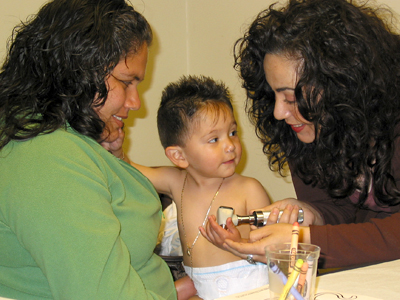
Job types expected to have the fastest growth in the next six years are the focus of a new survey of data by Mexican-American Pro-Archive, which lists the best occupations for Mexican-American professionals (or Hispanics in general).
According to the U.S. Bureau of Labor Statistics, the following occupations are projected to have the largest job growth from 2010 to 2020:
• Medical assistants: 30.9 percent growth.
• Physicians and surgeons: 24.4 percent growth.
• Licensed practical and vocational nurses: 22.4 percent growth.
• Registered nurses: 14.3 percent growth.
During the past three years, the American Community Survey has consistently showed Mexican-Americans making progress in occupations in business, science, and the arts. Their presence in such jobs increased from 16.2 percent in 2010 to 16.6 percent in 2012.
Women represent 22.1 percent of Mexican-Americans employed in management, business, science, and arts occupations. Between 2007 and 2011, there was a 1.7 percent increase in the number of Mexican-American males in management and professional occupations.
• 10.2 percent of Mexican Americans were employed in the professional, scientific, management, administrative and waste management services in 2012.
• 3.1 percent of the Mexican American population was employed in public administration in 2012.
The Bureau of Labor Statistics projects the following jobs likely to experience growth from Mexican-American professionals:
• Post-secondary teachers: 17.4 percent growth.
• Elementary school teachers: 16.8 percent growth.
• Accountants and auditors: 15.7 percent growth.
• First-line supervisors of office/administrative support workers: 14.3 percent growth.
“These numbers illustrate a bright future for Mexican-American professionals,” wrote Humberto Gutierrez of the Mexican American Pro-Archive.
In education, the latest American Community Survey showed that college and/or graduate school enrollment among Mexican-Americans has continued to grow from 16.8 percent in 2010 to 18.2 percent in 2012. Though enrollment is growing at a faster rate than the general population (which grew from 28.3 to 28.8 percent), it is still well below the rate of the general population.
“In general, graduate and professional degrees among the total population are more than triple when compared with Mexican Americans with graduate or professional degrees,” wrote Gutierrez.
Mexican-Americans are Americans of full or partial Mexican descent. As of July 2012, Mexican-Americans made up 10.9 percent of the United States' population with more than 34 million Americans listed as being of full or partial Mexican ancestry. As of July 2012, Mexican-Americans comprise 64.3 percent of all Hispanics in the United States.
